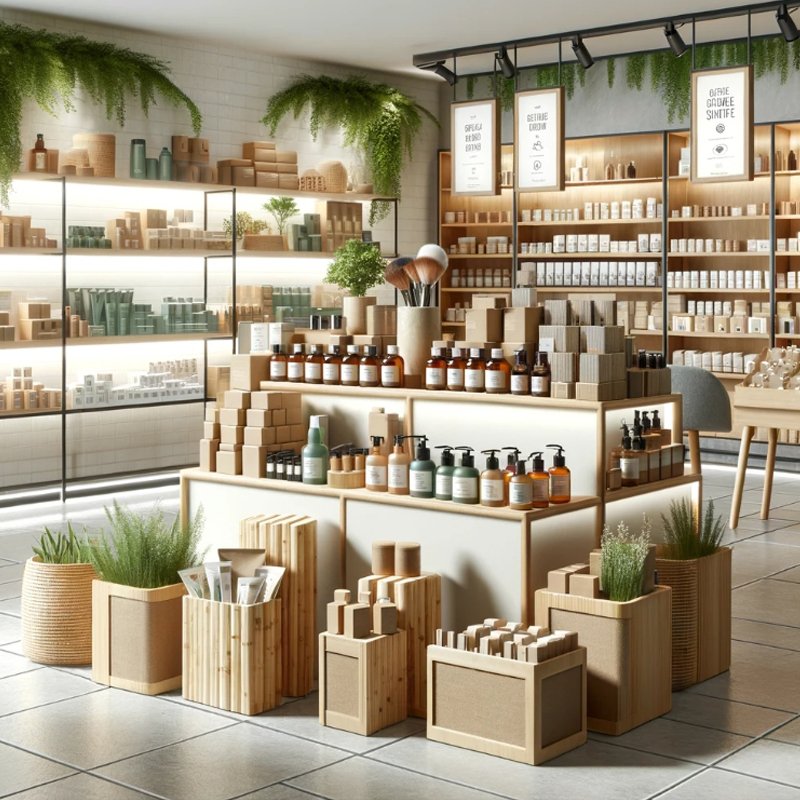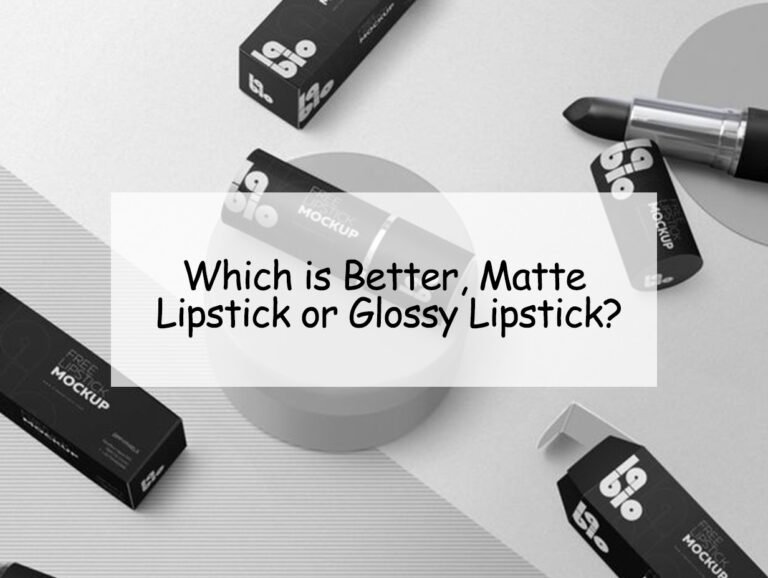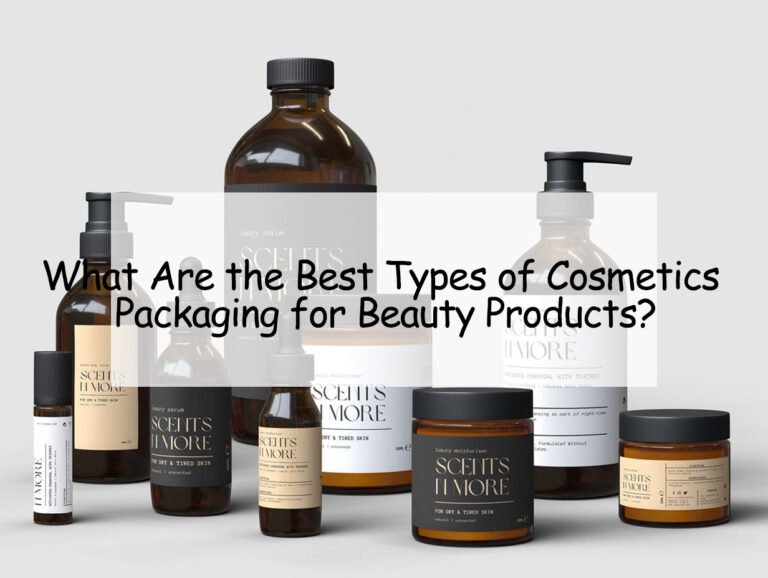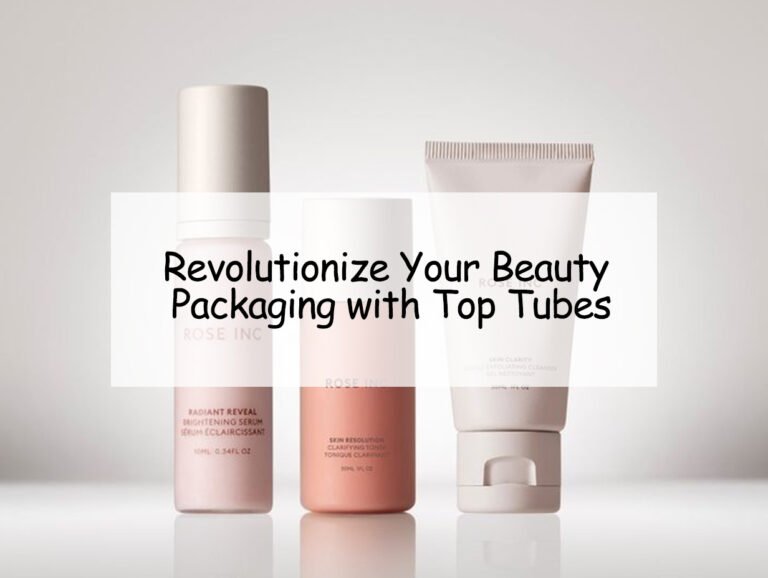Sustainable cosmetic packaging is essential as consumer demand grows for eco-friendly solutions, driving brands to innovate.
Sustainable cosmetic packaging significantly reduces waste, conserves resources, and lowers the beauty industry's carbon footprint. By adopting eco-friendly materials and practices, brands contribute to a greener future, meeting consumer demand for environmentally responsible products while minimizing environmental impact and promoting long-term sustainability within the beauty sector.
The move to sustainable packaging is reshaping the beauty industry, encouraging brands to embrace eco-friendly practices.
What is Sustainable Cosmetic Packaging?
The beauty industry has become more aware of the environmental toll its packaging takes on the planet. Sustainable packaging refers to using materials and designs that are eco-friendly, recyclable, or biodegradable.
Sustainable cosmetic packaging focuses on reducing the environmental impact of packaging materials while promoting responsible consumption. This includes using recyclable materials, minimizing plastic, and opting for biodegradable alternatives.
](https://jinlinpackaging.com/wp-content/uploads/2024/05/What-is-Sustainable-Cosmetic-Packaging.jpg)
Sustainable packaging is not just about finding new materials—it’s about rethinking the entire process of packaging design. While materials such as plastic are still commonly used, the beauty industry is making strides toward alternatives. Glass, aluminum, and plant-based plastics are emerging as more sustainable options.
One key aspect of sustainable packaging is recyclability. Materials like glass and aluminum are not only recyclable but can be reused countless times without degrading in quality. On the other hand, traditional plastics may break down into harmful microplastics if not properly recycled. By shifting to recyclable or biodegradable materials, brands can help reduce waste and promote sustainability.
Brands should also consider the lifecycle of their packaging. This includes sourcing materials responsibly, designing packaging that uses minimal resources, and encouraging consumers to recycle or reuse the packaging after use.
Comparison of Sustainable Packaging Materials
| Material | Recyclability | Environmental Impact | Cost |
|---|---|---|---|
| Glass | High | Low | Higher |
| Aluminum | High | Moderate | Moderate |
| Plastic (Recycled) | Moderate | High | Low |
| Paper (Biodegradable) | High | Low | Moderate |
The Benefits of Sustainable Packaging for Cosmetic Brands
Adopting sustainable packaging offers numerous benefits beyond its positive environmental impact. From cost savings to increased customer loyalty, sustainable packaging is a key strategy for brands looking to stay competitive.
Sustainable packaging helps brands improve their environmental footprint, meet consumer demand for eco-friendly products, and enhance brand loyalty by aligning with sustainable values.
](https://jinlinpackaging.com/wp-content/uploads/2024/05/The-Benefits-of-Sustainable-Packaging-for-Cosmetic-Brands.jpg)
There are many advantages for cosmetic brands adopting sustainable packaging. One of the most significant benefits is attracting eco-conscious consumers. Today's customers are increasingly looking for products that align with their values, and sustainability is at the top of the list. Brands that invest in eco-friendly packaging demonstrate their commitment to the environment, helping to build trust and loyalty among their target audience.
In addition to meeting consumer demand, sustainable packaging can reduce costs. Packaging materials like recycled plastics or biodegradable alternatives are often less expensive than traditional materials. Moreover, lighter packaging can result in lower shipping costs, reducing both environmental impact and expenses.
Sustainable packaging can also enhance a brand’s marketability. As sustainability becomes more important in consumer purchasing decisions, brands with eco-friendly packaging can use it as a selling point to differentiate themselves from competitors.
Common Materials for Sustainable Cosmetic Packaging
When considering sustainable packaging, brands need to choose the right materials. The most common sustainable materials used in cosmetic packaging are glass, aluminum, recycled plastics, and biodegradable alternatives.
Sustainable materials include glass, aluminum, plant-based plastics, and recycled materials, each offering different environmental benefits and challenges.
](https://jinlinpackaging.com/wp-content/uploads/2024/05/Common-Materials-for-Sustainable-Cosmetic-Packaging.jpg)
Choosing the right material for packaging depends on several factors, including product type, brand values, and cost considerations. Let’s take a closer look at some of the most common sustainable packaging materials:
-
Glass is a highly recyclable material, known for its ability to maintain product integrity and aesthetics. It is an excellent option for premium beauty brands seeking a luxurious and sustainable solution. However, glass is heavier than other materials, which can increase transportation costs and carbon emissions during shipping.
-
Aluminum is lightweight, highly recyclable, and durable. It’s a great alternative to plastic for products such as deodorants or sprays. Aluminum packaging can often be recycled without losing quality, making it a great choice for brands that want to reduce their environmental impact.
-
Recycled Plastics offer a cost-effective and recyclable option for sustainable packaging. While plastic still has a negative environmental reputation, using recycled plastics helps reduce waste and prevent plastic from ending up in landfills.
-
Biodegradable Materials such as plant-based plastics and paper-based solutions are becoming more common, especially for single-use products. While these materials may not be as durable as glass or aluminum, they provide a crucial solution for reducing long-term waste.
Pros and Cons of Common Sustainable Packaging Materials
| Material | Pros | Cons |
|---|---|---|
| Glass | Recyclable, Elegant | Heavy, Expensive |
| Aluminum | Lightweight, Recyclable | Higher cost |
| Recycled Plastic | Cost-effective, Recyclable | Lower quality |
| Biodegradable Paper | Eco-friendly, Lightweight | Less durable, Limited use |
The choice of material should reflect the product’s needs while also balancing environmental impact and cost.
How to Choose the Right Sustainable Cosmetic Packaging Supplier?
Selecting the right supplier for sustainable packaging is crucial. A reliable supplier can ensure that your packaging is not only environmentally friendly but also meets the necessary quality standards.
When choosing a supplier, look for certifications, a proven track record, and transparency in their sustainability practices.
](https://jinlinpackaging.com/wp-content/uploads/2024/05/How-to-Choose-the-Right-Sustainable-Cosmetic-Packaging-Supplier.jpg)
When selecting a supplier for sustainable packaging, it's important to focus on a few key factors. First, ensure that the supplier offers materials with certifications like FSC (Forest Stewardship Council) for paper-based packaging or ISO 14001 for environmental management. These certifications guarantee that the materials are sourced responsibly and meet the required environmental standards.
Next, look for a supplier who is transparent about their sustainability practices. A good supplier should provide detailed information about how their packaging is made, where the materials come from, and how the packaging can be recycled or disposed of.
Innovation is also crucial when selecting a supplier. Sustainability is an evolving field, and a supplier with strong research and development capabilities can offer innovative packaging solutions that help meet your sustainability goals.
Lastly, choose a supplier who can provide consistent, on-time delivery. Delays in packaging shipments can result in missed opportunities or product shortages. Efficient logistics are key to maintaining a smooth production schedule.
Design Trends in Sustainable Cosmetic Packaging
Design is a critical element in sustainable packaging. Brands are moving towards minimalist designs, multi-functional packaging, and creative uses of eco-friendly materials.
Design trends in sustainable packaging are focusing on minimalism, reusability, and using innovative, eco-friendly materials to meet consumer demands for sustainable products.
](https://jinlinpackaging.com/wp-content/uploads/2024/05/Design-Trends-in-Sustainable-Cosmetic-Packaging.jpg)
The design of sustainable packaging is evolving in several exciting ways. One of the most popular trends is minimalism, where less is more. By using fewer materials and simplifying the packaging design, brands can reduce waste and create a more streamlined aesthetic. This design philosophy is in line with the growing consumer desire for products that are both functional and eco-friendly.
Another design trend is multi-functional packaging. Packaging that can be reused or repurposed after the product is used can significantly reduce waste. For example, packaging that doubles as a storage container or decorative item provides more value to the consumer while promoting sustainability.
Brands are also experimenting with new, creative uses of eco-friendly materials. Packaging made from biodegradable materials, recycled plastics, or even mushroom-based packaging is gaining attention. These designs allow brands to make a statement about sustainability while offering consumers unique packaging experiences.
Challenges and Solutions in Adopting Sustainable Packaging
Adopting sustainable packaging can present challenges. These may include higher costs, limited material availability, and logistical complexities. However, these hurdles are not insurmountable.
Challenges such as high costs and supply chain complexities can be overcome with innovative solutions and close collaboration between brands and suppliers.
](https://jinlinpackaging.com/wp-content/uploads/2024/05/Challenges-and-Solutions-in-Adopting-Sustainable-Packaging.jpg)
One of the primary challenges with sustainable packaging is the higher initial cost of eco-friendly materials. Materials like glass, aluminum, and biodegradable plastics tend to be more expensive than traditional plastic, which can result in higher production costs. However, brands can mitigate this by exploring cost-effective alternatives like recycled plastics or opting for minimal packaging designs to reduce material use.
Another challenge is the availability of sustainable materials. In many regions, the supply chain for eco-friendly packaging is still developing, making it difficult to access materials in the quantities needed. However, as demand grows, more suppliers are entering the market, and the availability of sustainable packaging materials is improving.
Finally, supply chain complexities can create challenges in ensuring timely deliveries of sustainable materials. Brands should prioritize working with suppliers who are committed to environmental sustainability and have the infrastructure in place to meet demand.
The Rise of Luxury Sustainable Cosmetic Packaging
Sustainability is not just for budget-friendly brands; luxury brands are also embracing sustainable packaging solutions. High-end cosmetic brands are using eco-friendly materials while maintaining their premium quality standards.
Luxury cosmetic brands are setting the standard for sustainable packaging by incorporating innovative, eco-friendly materials while maintaining the elegance and quality their customers expect.
](https://jinlinpackaging.com/wp-content/uploads/2024/05/The-Rise-of-Luxury-Sustainable-Cosmetic-Packaging.jpg)
Luxury cosmetic brands are leading the charge in sustainable packaging. These brands are not only focusing on aesthetics but are also prioritizing the environmental impact of their packaging choices. Glass, aluminum, and other premium sustainable materials are increasingly being used for high-end cosmetic products, ensuring that the packaging reflects the luxury and sustainability values of the brand.
In addition to using high-quality materials, luxury brands are also exploring refillable packaging options. Refillable packaging encourages consumers to reuse their containers, reducing waste and making the packaging more sustainable in the long term. Some brands are even incorporating features such as recyclable or biodegradable packaging into their premium products, ensuring that sustainability is built into the product’s entire lifecycle.
Insights: Transforming Beauty with Sustainable Packaging
How is sustainable cosmetic packaging reshaping the beauty industry?
Sustainable cosmetic packaging minimizes environmental impact, supports the circular economy, and boosts brand loyalty. By leveraging biodegradable materials and refillable designs, brands align with regulatory trends and cater to eco-conscious consumers, enhancing their image and corporate responsibility.
The Impact of Sustainable Packaging
Environmental Impact and Innovation
- Resource Efficiency: Refillable and modular designs extend product life cycles, reducing material use and waste, particularly for high-volume items.
- Biodegradable Materials: Utilizing renewable resources like bioplastics and compostables minimizes reliance on fossil fuels and accelerates decomposition when managed properly.
Circular Economy and Consumer Trust
- Refill and Subscription Models: Encouraging refill systems supports circularity and reduces virgin material demand, improving brand differentiation.
- Transparent Practices: Brands that showcase sustainability through lifecycle assessments attract eco-conscious consumers willing to pay a premium.
Implementation Best Practices
| Strategies | Benefits | Considerations |
|---|---|---|
| Design for recyclability | Simplifies recycling | Avoid complex composites |
| Material innovation | Reduces fossil fuel use | Ensure effective disposal |
| System collaboration | Enhances consumer access | Invest in infrastructure |
Sustainable packaging, including options from eco friendly cosmetic packaging manufacturers and innovations like bamboo packaging, reduces ecological footprints and conserves resources, creating a greener future for the beauty industry.
Conclusion
Sustainable cosmetic packaging is the future of the beauty industry. By choosing eco-friendly materials and innovative designs, brands can reduce their environmental impact and meet the growing demand for sustainable products.
2.png)



